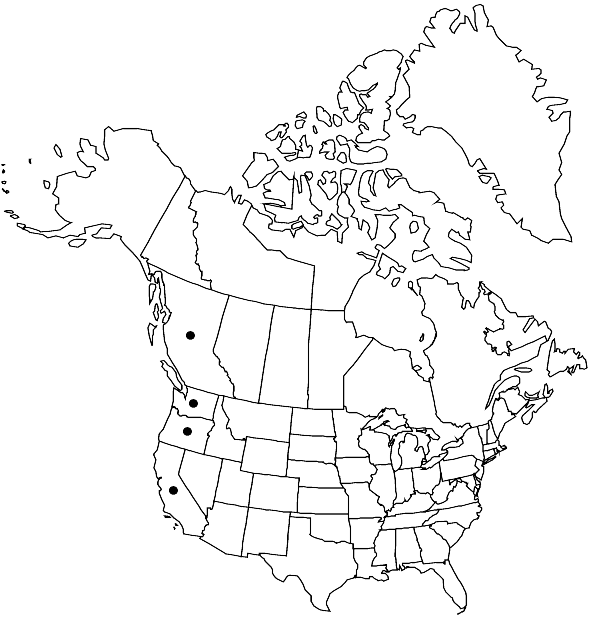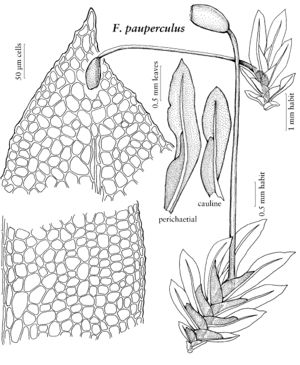Difference between revisions of "Fissidens pauperculus"
Erythea 2: 97, fig. 1. 1894,.
FNA>Volume Importer |
imported>Volume Importer |
||
| Line 41: | Line 41: | ||
|publication year= | |publication year= | ||
|special status= | |special status= | ||
| − | |source xml=https:// | + | |source xml=https://bibilujan@bitbucket.org/aafc-mbb/fna-data-curation.git/src/bb6b7e3a7de7d3b7888a1ad48c7fd8f5c722d8d6/coarse_grained_fna_xml/V27/V27_496.xml |
|genus=Fissidens | |genus=Fissidens | ||
|species=Fissidens pauperculus | |species=Fissidens pauperculus | ||
Revision as of 22:33, 27 May 2020
Plants 2–3 × 1.5–2.5 mm. Stems unbranched; axillary hyaline nodules absent; central strands weak. Leaves as many as 5 pairs, oblong to oblanceolate to lanceolate, acute to short-acuminate, to 2.1 × 0.6 mm; margin crenulate-serrulate but often sharply serrate on distal parts of vaginant laminae, elimbate; dorsal lamina usually narrowed proximally, ending at insertion, not decurrent; vaginant laminae ± 1/2–2/3 leaf length, unequal, minor lamina ending near margin; costa ending 6–15 cells before apex, bryoides-type; laminal cells 1-stratose, distinct, smooth, plane, firm-walled, long-hexagonal to oblong to regularly quadrate, decreasing in size from costa to margin, medial cells 10–54 × 12–25 µm, largest along costa, marginal cells 9–15 µm, juxtacostal cells in vaginant laminae pellucid, greatly enlarged. Sexual condition rhizautoicous and gonioautoicous. Sporophytes 1 per perichaetium. Seta 2.5–5 mm. Capsule theca exserted, usually inclined, slightly arcuate, bilaterally symmetric, infrequently erect, nearly radially symmetric, 0.7 mm; peristome scariosus-type; operculum 0.3–0.8 mm. Calyptra cucullate, smooth, 0.4 mm. Spores 9–13 µm.
Habitat: Bare gravelly soil in dried stream beds and on banks, sometimes found with F. crispus, often associated with the Coast Redwood Forest (L. F. Koch 1951)
Distribution

B.C., Calif., Oreg., Wash.
Discussion
Fissidens pauperculus is distinguished by its short costa, and smooth, plane laminal cells that gradually decrease in size outwardly. P. A. Florschütz (1964) equated specimens from Suriname with this species. R. A. Pursell (1994b) demonstrated, however, that the North American plants are different from those of South America. Although close to the South American plants that belong to F. inaequalis Mitten, the North American species differs by its slightly smaller laminal cells and in the absence of truncate-retuse vaginant laminae in the perichaetial leaves.
Selected References
None.
